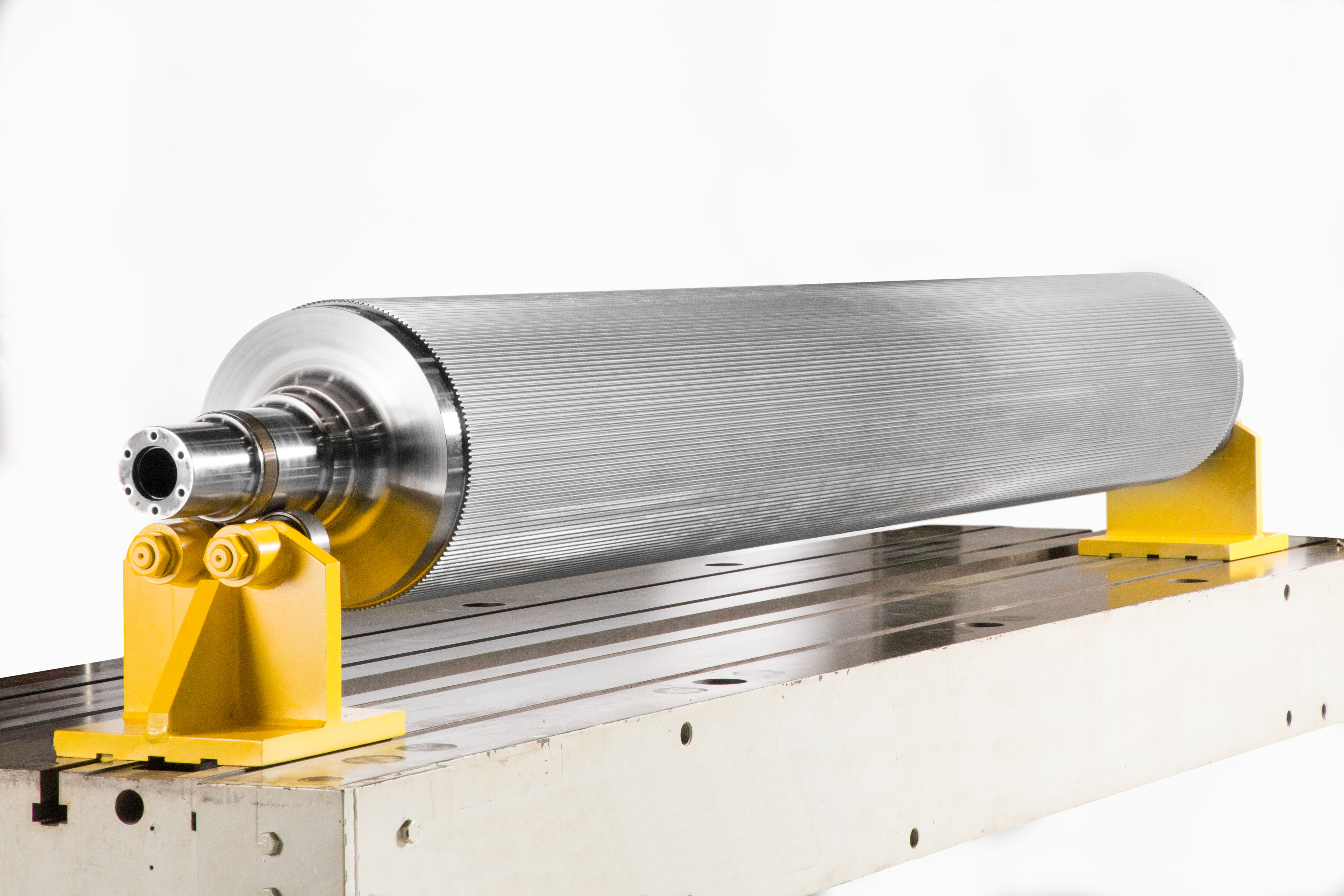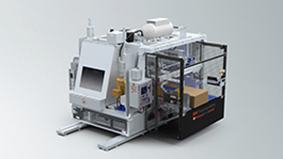
Interview: Smaller and Smaller Batch Sizes and Complex, Lightweight Papers - DREWSEN Invests in Paper Processing Efficiency
To be able to grow with its speciality papers DREWSEN is investing in a highly efficient Questec sheeter from �鶹��. In this interview, DREWSEN's CEO Dr Matthias Rauhut explains why.
Dr. Matthias Rauhut is the CEO of DREWSEN SPEZIALPAPIERE GmbH & Co. KG, based in Lachendorf, Germany. At the end of 2020, DREWSEN decided to expand its paper converting equipment with a Questec sheeter from �鶹�� for cutting complex special or security papers of various grammages more efficiently - and thus to set up its entire paper processing more up-to-date and profitable.
Dr. Rauhut, how would you characterize DREWSEN and what has paper processing been like at DREWSEN up to now?
DREWSEN has been a manufacturer of high-quality speciality papers for over 480 years. With our broad portfolio and our 450 employees, we generate annual sales of €150 million and have been growing steadily for years. 10 % of our papers are cut to sheets, the rest are sold as reels. Today, our sheeting equipment includes two �鶹�� machines: an SHM 1650 sheeter with 6 unwinds and cut-to-watermark, and an older Bielomatik P-380 sheeter with 4 unwinds. In addition, there are guillotines, a ream wrapper, several winders, and a reel cutter.
What are typical examples of your speciality papers?
There are 4 areas. Leaflets for the pharmaceutical industry are a good example for our fine papers. These papers with grammages ranging from 37 to 55 gsm must be cut very cleanly and precisely. Base paper for adhesive labels, which is laminated and then printed, is an example of technical speciality papers. Security papers such as the tax stamp base paper for alcohol or tobacco can include up to 40 different security features, such as registered watermarks. One of our latest products: papers for drinking straws, as an innovative replacement for plastic.
Your company is steadily growing - was that the only trigger for investing in a new sheeter?
Not only, there was more to it. We are achieving growth with our technical speciality papers, papers for pharmaceutical leaflets and our innovation in papers that replace plastic. Against market trends, we have also been able to increase sales of sheet papers. As the total surface area of sheet paper to be cut per year is increasing significantly, we repeatedly reached our capacity limits in the past year. We produce 7 days a week, in 3 shifts and around the clock. Last year, we even had to resort to external converters, which of course resulted in higher effort, higher costs, and unfortunately also higher claim rates.
But we were particularly concerned with the topic of efficiency. Increasingly complex papers, a high degree of specialization and customer-specific requirements - we are observing a continuing trend towards lower and lower grammages in the DREWSEN portfolio. At the same time, quantities per order are getting smaller. This means we sell more square meters of paper in smaller lot sizes every year. While this provides more value for our customers, we are faced with the challenge of cutting ever lower [alternative: lower and lower] grammages and in smaller batch sizes. Our existing sheeters are efficient with large batches, but not with small ones.
So DREWSEN reached its capacity limits and at the same time struggled with declining profitability in paper converting. Please give us an example of how this manifested itself in your production process.
Both sheeters were working at full capacity. However, our "experienced" Bielomatik sheeter can only cut grammages greater than 60 gsm with good quality. This means that lower grammages must be cut on the SHM sheeter anyway.
Especially for papers for pharmaceutical leaflets, we often run jobs that would require 7 unwinds, for example. The SHM sheeter has 6 unwinds. So, we typically split these jobs into 2 runs in a row - one job with 3 unwinds and another one with 4 unwinds. Two runs not only take twice as long, but due to the smaller number of webs, only a reduced speed per run is possible. This is anything but economical.
Small batch sizes, on the other hand, sometimes require only one unwind - to improve efficiency at least somewhat, we sometimes run the sheeter with two rolls and store finished pallets in our warehouse. This is risky, takes up space and increases inventory - so again this is anything but "lean".
Handling security papers with watermarks is another extreme example of the lack of efficiency when using a large batch sheeter for small batch jobs. Our SHM sheeter is equipped with an optical recognition system detecting the position of the watermark in the paper. It then controls the cross-cut accordingly so that the watermark is in a precisely defined position on the cut sheet. However, this is only possible with one web of paper, we only use one of the six unwinds. This is inefficient and the sheeter’s capacity is not utilized.
Therefore, the solution for more efficiency in the entire paper processing was a new small batch sheeter, especially for low grammages.
Exactly. This solution not only gives us the capacity gain of the new sheeter, it also frees our large batch sheeters from inefficient small batch orders, allows them to run again with the greatest possible efficiency, and thus also recovers capacity there.
Metaphorically speaking, we no longer use the bus to take just our child to kindergarten but drive our Smart car. The combination of the SHM sheeter with the Questec system results in exactly the right "fleet" for DREWSEN: an efficient sheeter for large batch orders as well as a flexible sheeter for small order sizes. Ideally, our “experienced” Bielomatik sheeter will no longer be needed in the long term. With this solution, we utilize the potential of all sheeters in the best possible and most efficient way.
How did you come across the Questec technology and why did you choose the sheeter and �鶹��?
We have been searching for a small lot sheeter for lightweight paper grades for a few years now. We have been in regular contact with all well-known manufacturers of sheeters, but we simply did not find a sheeter that cuts, for example, a single web of 40 gsm lightweight paper efficiently and with excellent quality. Even talking to other paper mills or converters in our industry did not help us.
Then, early last year, we were again in contact with �鶹��. To be honest, we were not immediately convinced by the Questec technology and its contactless sheet transport by "AirStream" air strips. We could not imagine cutting lightweight paper or paper for food packaging with 30 gsm at speeds of up to 400 m/min with perfect cut quality and accurate stacking.
What convinced us were the trial runs with our very demanding paper on the Questec pilot installation at �鶹�� in Hamburg. It was very important that we could see our product being cut "live" rather than just any paper.
In addition, there was the good contact with BWP, which has existed for years, on many organizational levels with exchange at eye level. Just like DREWSEN, also BWP takes a very pragmatic approach to master projects, always with the aim of creating a win-win situation for both sides.
I think this is reflected in the fact that until we receive our customized Questec sheeter at the end of 2021, we are already using the pilot sheeter from BWP Hamburg now at our plant. That really accelerated our decision to invest in a Questec sheeter.
Our advantage: We can already now use the capacity of the small batch sheeter, for example for the efficient processing of security papers with registered watermarks. The Questec sheeter cuts the product with a single web - precisely and efficiently. Our SHM sheeter, on the other hand, can again be used more efficiently with as many unwinds as possible. Plus: The DREWSEN team is already learning on the installation every day.
The advantage for �鶹��: Due to the daily changing requirements of our complex papers, the sheeter can be continuously improved. In addition, it is available for demonstration purposes in the DREWSEN production environment for new customers.
We are excited about the next few months to come, looking forward to the increase in capacity and improvement in the efficiency of our paper processing already achieved - and then, of course, to our new, customized Questec sheeter from �鶹�� in the Fall.
Thank you very much for the interview, Dr. Rauhut.
Find Your Machine
�鶹�� offers a wide selection of paper industry equipment with industry-leading technology.
Learn more about the �鶹�� equipment and products offered.





.tmb-small.webp?Culture=en&sfvrsn=d9e817f_2)







.tmb-webp.webp?Culture=en&sfvrsn=6cca827f_4)